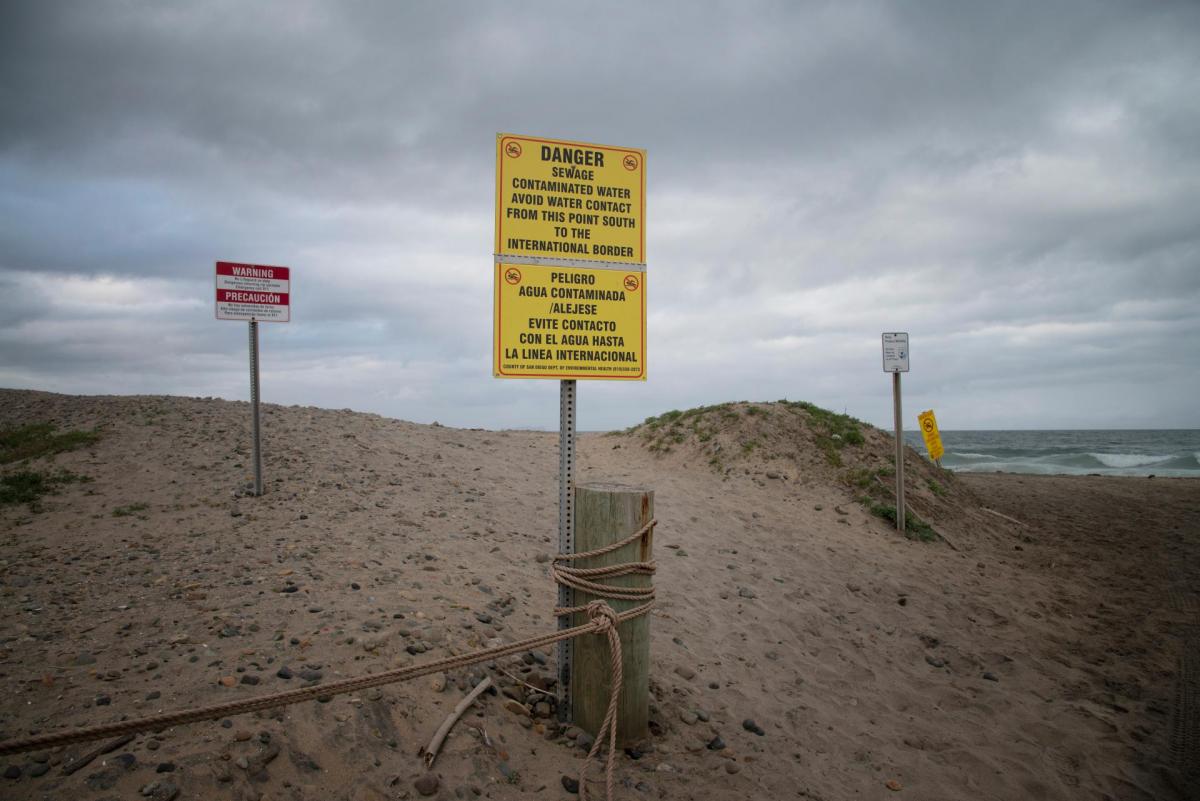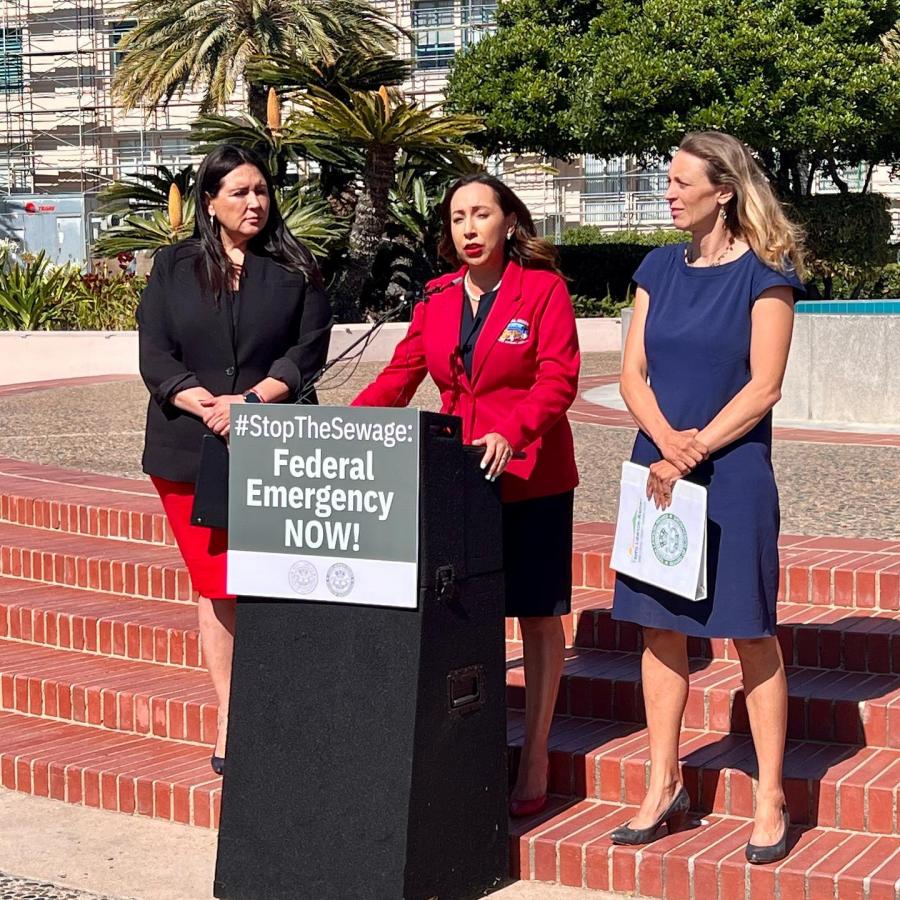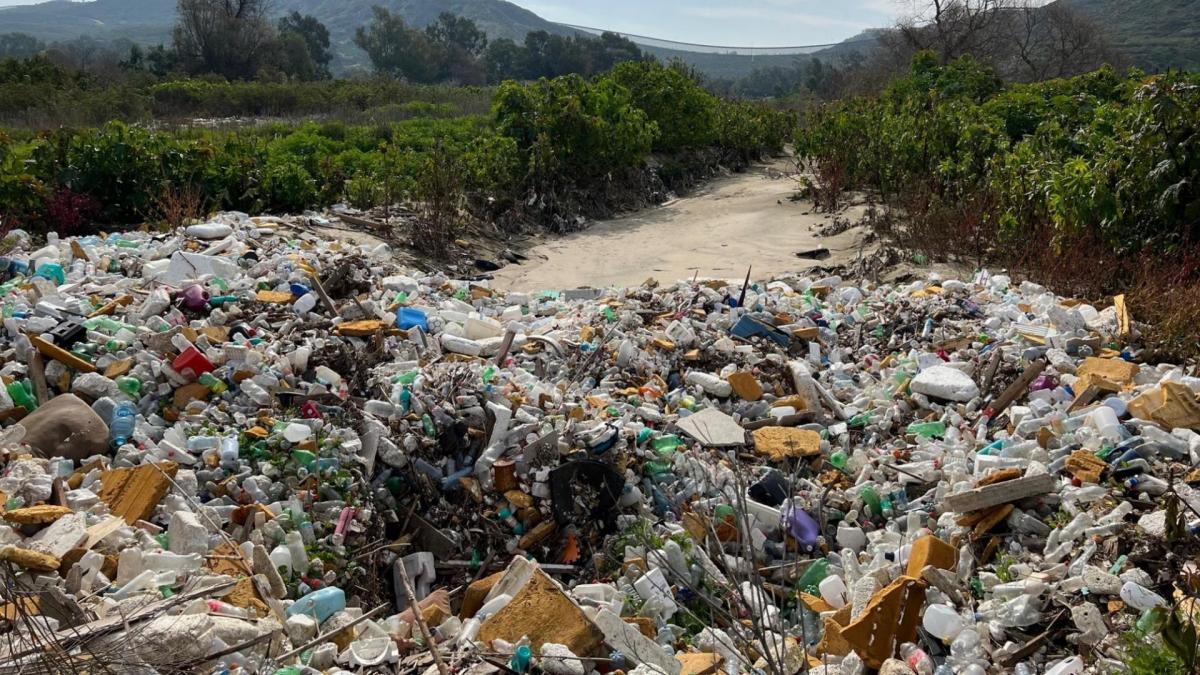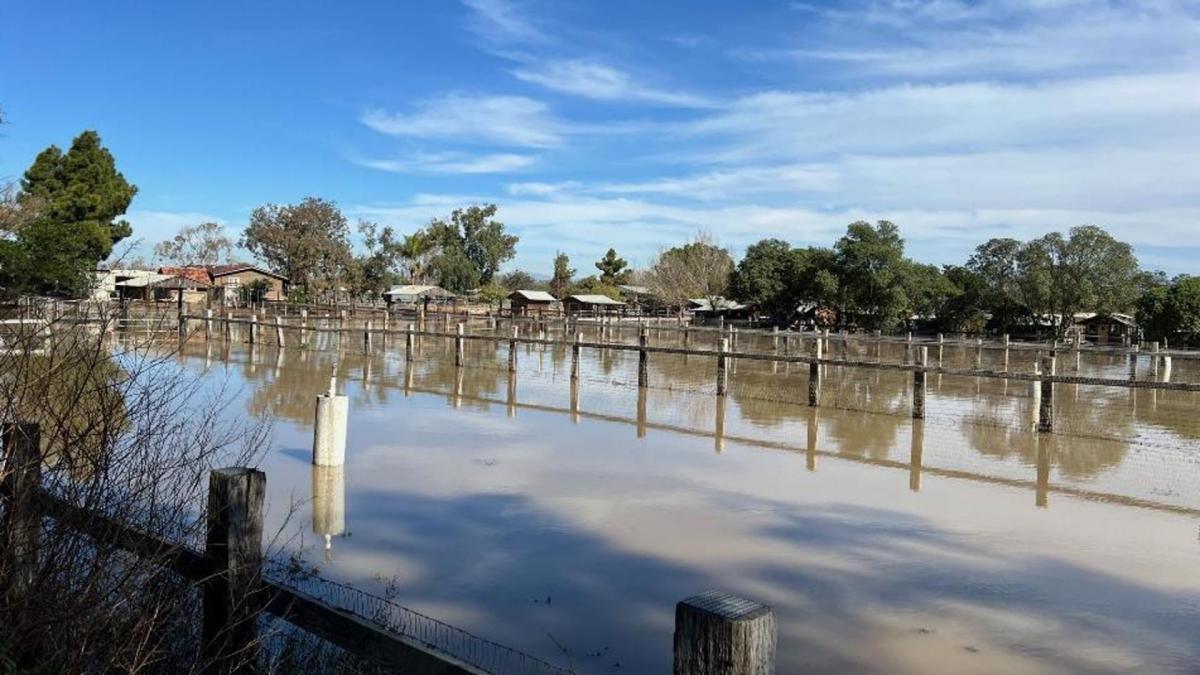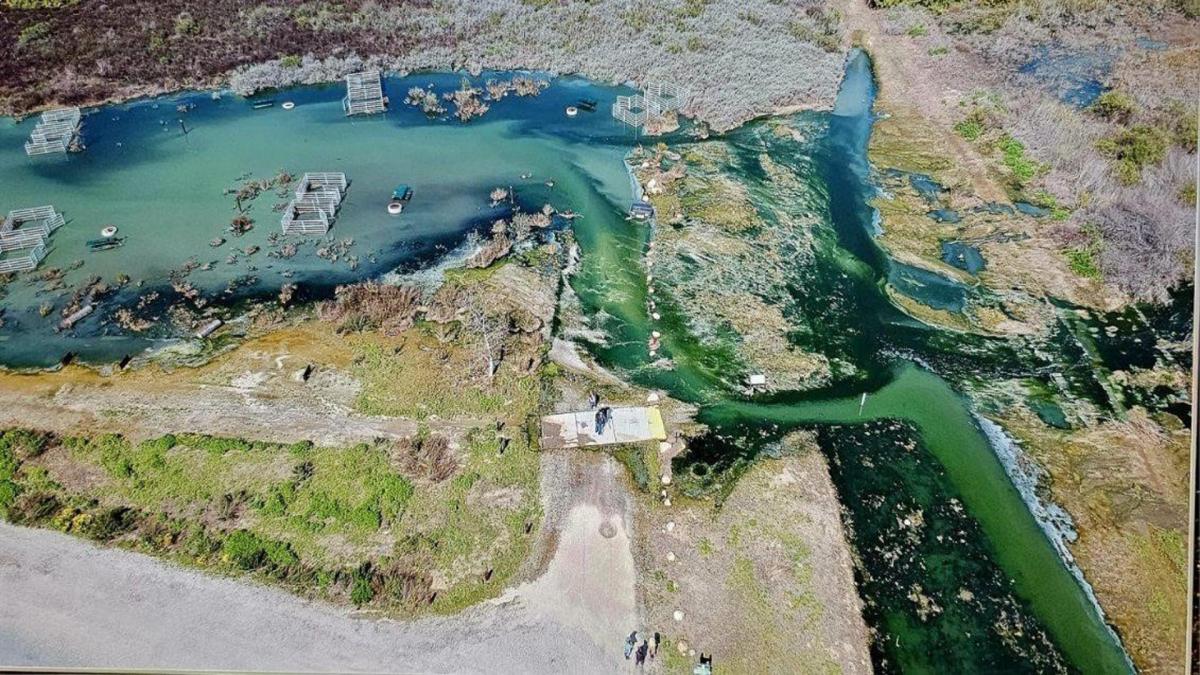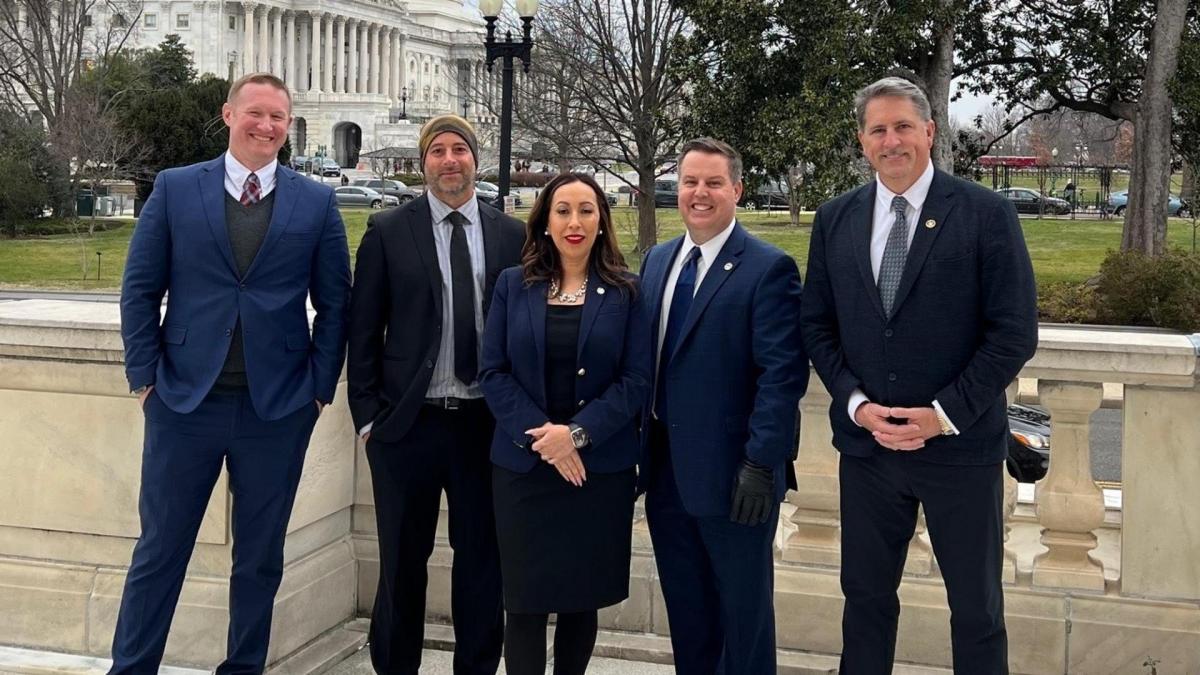This is ‘on the level of the Flint water crisis,’ warn advocates at California’s southern border
Jackie Krentzman is a Bay Area-based writer/editor with experience creating compelling content in multiple sectors, including DEI, affordable housing, nonprofits, and education.
For most of the past two years, residents of Imperial Beach have not been able to open their windows. Nor spend the day at the beach with their family. Nor send their children to a playground. A series of converging factors, including an increase in storms brought about by climate change, have caused raw sewage to spill into the Pacific Ocean.
“Every day is hit or miss — is this [a] day I am going open [to] the door and be hit by that unbearable stench?” said Imperial Beach Mayor Paloma Aguirre, an avid but frustrated surfer who made this her signature issue. “An entire generation of children here are growing up not knowing if it is safe to go outside.”
Outdated sewage treatment plants on both sides of the border have fallen into disrepair, bringing a host of deleterious public health, environmental, and economic challenges. It’s so bad that beaches have been closed for the past 800 days and counting. Imperial Beach is not alone, as the sewage has moved as far north as Coronado, just south of San Diego.
“A crisis like this should never happen in California, with the fifth largest economy in the world,” said Aguirre. “We are living with conditions parallel to that of a developing nation.”
This crisis is a classic example of a local issue that requires a bipartisan regional, state, and federal response. When crises of this size impact cities — whether they be threats to the local water supply, a wildfire, an earthquake, or catastrophic flooding — no community can respond to an emergency and manage its impacts alone. Indeed, further east, local officials in Imperial County are struggling with a similar problem in the New River. While not as severe as the Tijuana River crisis, officials there are trying to contain another surge of cross-border pollution, chemicals, and sewage made worse by climate change.
Cities near the Tijuana River have collaborated with county and federal elected officials, nonprofits, and residents to pressure the state and federal governments into action. Their efforts began to pay off in March when Congress allocated $103 million — about a third of what’s needed — to upgrade a key waste treatment plant in San Ysidro. It also included a provision that allows additional federal agencies, local and state governments, and nonprofits to contribute funding to repair and operate the treatment facility.
Such a collective effort can serve as a precedent for other cities affected by large-scale crises beyond their scope to address. But much work remains.
A worsening problem
The Tijuana River watershed, which originates in Mexico, has been a source of pollution for a century. But for the last two decades, Tijuana’s treatment plants have not been able to keep up with the city’s swelling population. Add a marked increase in severe storms and millions of gallons of contaminated water are now flowing out to the ocean each day as far north as San Diego. A January storm alone brought the highest one-day flow of sewage-tainted water since 1993. The total amount of annual waste discharged reached 40 billion gallons in 2023 — an increase of 30 billion over the previous year.
But it’s not just Mexico’s Punta Bandera sewage treatment plant that can no longer keep pace. North of the border, the federally managed International Wastewater Treatment Plant is already woefully inadequate and needs hundreds of millions of dollars in repairs and reconstruction. The recent appropriation bill is a start, but at least another $200 million is required.
The San Diego chapter of the national nonprofit Surfrider is one of the organizations at the forefront of this crisis. It works with cities and volunteers to raise awareness and advocate for change at all government levels.
“Ultimately, the problem has simply not been prioritized,” said Sarah Davidson, who manages Surfrider’s Clean Border Water Now program. “This is a national emergency on the level of the Flint water crisis, but nobody is talking about it or seeing it that way. The situation is becoming more and more dire.”
“They are training in sewage”
Residents have felt the impact of contaminated water and airborne particulates on many levels, none more disturbing than public health. Carcinogenic chemicals — including arsenic and heavy metals, pesticides banned in the U.S., and bacteria like E. coli — are brought north by the flow of the river and airborne droplets spread by crashing waves. Even diseases that have been nearly eradicated in the U.S., such as tuberculosis, may be spreading in the industrial runoff.
According to Mayor Aguirre, last summer Imperial Beach had to post its first-ever boiled water advisory after Tropical Storm Hilary caused waters to rise to unprecedented levels and overflow. “Within days our drinking water sample in the southwest corner of the city tested positive for E. coli and Shigella,” she said.
Local doctors and hospitals have reported a significant uptick in patients coming in with gastrointestinal illnesses and asthma. In an October 2023 presentation to the California Coastal Commission, Dr. Kimberly Dickson noted her clinic recorded a 560% increase in gastrointestinal illness and diarrhea in the wake of Hurricane Hilary. According to Davidson, Aguirre, and others, the number of reported and anecdotal cases of illnesses — nausea, headaches, upper respiratory symptoms — has rapidly escalated.
It’s become a national security issue as well. Coronado Council Member John Duncan said he sees Navy Seals training in the ocean even on beach closure days.
“They are training in sewage,” said Duncan, who has worked with Congressman Scott Peters to enlist former Navy Seals in Congress to support their cause.
Dolphins are reportedly contracting sepsis
The crisis is having a devasting impact at the mouth of the Tijuana River, a vibrant ecosystem that supports hundreds of species of birds, fish, mammals, and invertebrates. The Tijuana Estuary is the largest coastal wetland in Southern California and an essential nesting ground for over 370 bird species.
Dolphins are reportedly contracting sepsis caused by bacteria commonly transmitted through feces and urine. Tons of waste carrying banned toxic chemicals, tires, plastics, Styrofoam, and microplastics have exponentially multiplied, endangering many species.
“There’s no question that this is negatively impacting ecosystem functions, habitat, and wildlife health in the estuary and along the coastline,” Davidson said. “Not only is raw sewage contaminating the transboundary flows in the Tijuana Watershed, but it is also bringing industrial waste and chemicals that have been banned in the U.S. for decades.”
The water crisis has also disproportionately impacted people in South County cities, where residents are in lower income brackets and often people of color. (Imperial Beach is 52% Latino). Outdoor programs such as the YMCA Surf Camp now must bus children, at a higher cost, over an hour each way to beaches north of San Diego. Many families cannot afford outings at that distance from home.
It’s used to be hard to find parking. “Now it’s easy”
Many of the cities’ economies are driven by their location on once pristine stretches of beaches, attracting locals and tourists alike. But with the frequent beach closures, people are spending their income elsewhere — or driving an hour or more to beaches in North San Diego County.
At an October California Coastal Commission meeting, a policy advisor for the San Diego Regional Chamber of Commerce noted that 74% of businesses in South County have been negatively impacted by transboundary sewage pollution. Two-thirds have reported revenue decreases due to beach closures and pollution, and nearly 30% disclosed laying off staff.
Imperial Beach alone has lost significant revenue as major events have been canceled, including Ironman triathlons, surfing competitions, and music festivals. Property values near the beach have plummeted 20%. The city estimates that it lost tax revenue from tourist spending at approximately $500,000 annually.
“It used to be you couldn’t find parking near downtown or the beach on a weekend,” said Aguirre. “Now it’s easy.”
Chula Vista, situated just north of Imperial Beach, is another significantly impacted city. Many of its residents work for Border Patrol or at a nearby naval base. The city has a major hotel and conference center and two mixed-use housing projects in the pipeline, representing $4.5 billion in investment.
“We fear that once they are finished, visitors won’t want to come and we may have difficulty maximizing the occupancy of the housing and retail units,” Mayor John McCann said.
Overcoming political headwinds
The movement to remedy the crisis is making headway. The priority — and challenge — has been convincing Congress to authorize funding so it can treat the wastewater adequately. The March allocation of $103 million came about in no small part because of the efforts of the South County coalitions. For the past two years, they have urged Gov. Gavin Newsom to put his weight behind the request, which he did in January. Then, a bipartisan delegation of South County mayors and state Coastal Commission representatives, joined by Congressman Peters, lobbied in Washington for the supplemental funding.
The approved appropriations and freeing of funding from other sources have offered the communities hope that their children can once again play in the surf safely. It also demonstrates to other cities what is possible when multiple levels of government work as one. Coronado Council Member John Duncan, who has been pivotal in these efforts, lauded the collective response.
“The commitment and advocacy of so many people and agencies coming together worked,” Duncan said. “We’ve finally reached the tipping point where everyone knows about it, everyone is talking about it, and it had to be funded.”
While the recent funding has brought a collective sigh of relief, local officials recognize that the fight must continue. But officials say more help is needed from the state and federal governments.
“This appropriation is a step in the right direction and is cause for celebration,” said Aguirre. “However, the work doesn’t end here. Our communities will continue to bear the brunt of this pollution until the plant is fixed and expanded, the sewage and trash throughout the Tijuana River Valley is remediated, and further action is taken to ensure we eliminate entirely the sources of toxic pollution.”

